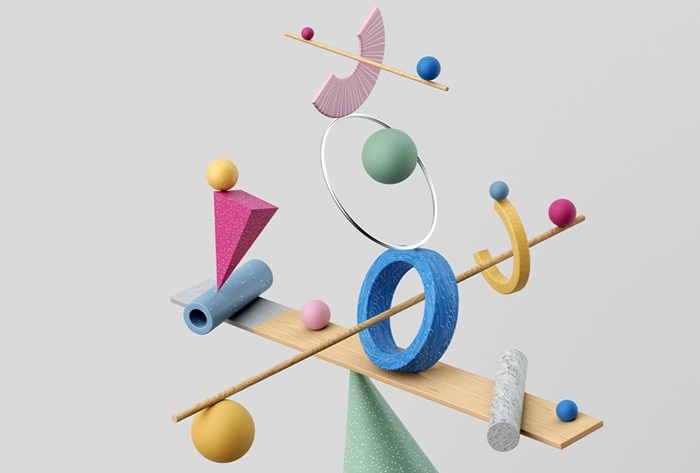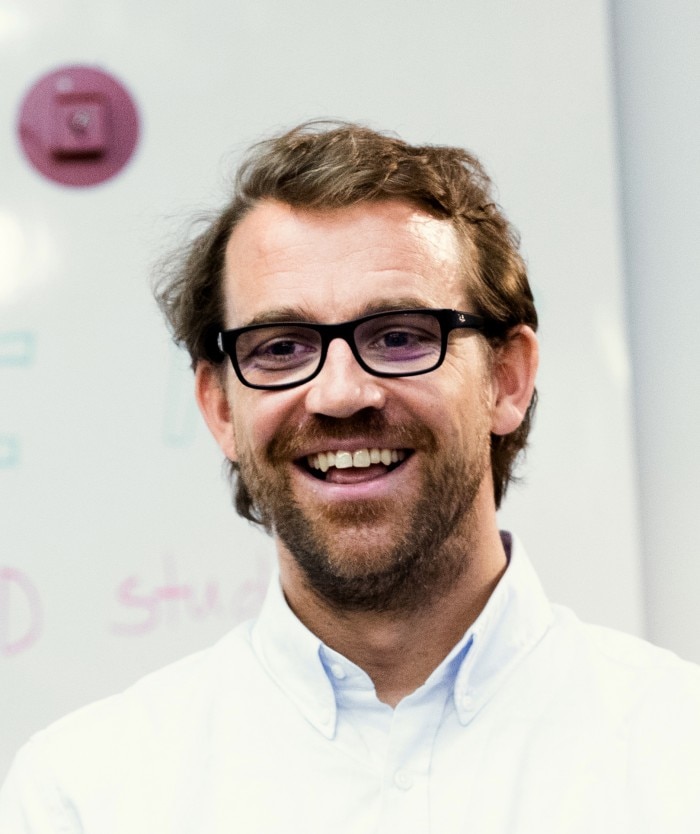-
- Benchtop Centrifuges
- Floor-Standing Centrifuges
- Refrigerated Centrifuges
- Microcentrifuges
- Multipurpose Centrifuges
- High-Speed Centrifuges
- Ultracentrifuges
- Concentrator
- High-Speed and Ultracentrifugation Consumables
- Accessories
- Tubes
- Plates
- Device Management Software
- Sample and Information Management
- IVD Products

Dossier Creativity 2 - Creativity Is (Not) an Art
Beyond Science
- Nature
- Off the Bench
- Off the Bench
- Dossier
Creativity is not a mere question of character – everyone can learn it. Sebastian Kernbach at the University of St. Gallen spoke with us about brain writing, the negative impact of perfectionism and why we were so much more creative when we were children.
Sebastian Kernbach in interview - short portrait
Sebastian Kernbach is Assistant Professor for Creativity and Design at the MCM Institute for Media and Communication Management at the University of St. Gallen and Visiting Fellow at Stanford University. In 2018, he founded the Life Design Lab, won the HSG Impact Award and wrote two books on the topic: Life Design and the Life Design Action Book with seven strategies to help us move from thought to action and overcome the lack of willpower.
More on this topic at:

When looking for creative ideas, is silence really golden?
It is often healthy to talk about the subject; thoughts stabilize during the act of talking. One speaks and receives feedback along with a new perspective. It actually doesn’t matter whether I talk to my nephew or my 96-year-old grandmother. The important part is that I formulate my thoughts, and I have completely new ideas.
What else do you have in your bag of tricks?
My absolute favorite method is visualizing – using pen and paper to write about and draw my thoughts. This is a good idea because we all suffer from “cognitive overload”. When we overload our short-term memory, we become overextended. Visualizing helps unburden the brain. More brain power will be available for my actual topic at hand. And as a side effect, visualizing aids communication. If I create a mind map (note: a graphic depiction of a concept with one word at the center, connected to other concept), others will be better able to understand what I am currently working on, and it is possible that they may contribute.
Creative achievement does not have to be a solitary battle?
No, one cannot get everything done by oneself. There is a saying: If you want to be creative, remain alone. If you want to be great, come together.
How does creativity in a team actually work?The simplest method is “building on one another”, and this is how it works: I will describe my current problem and invite others to say “Yes, and …” – not “Yes, but …”, because that would be negative. “Yes, and …” means “Let’s consider together what else could be done.”
Many teams sit together and brainstorm. Is this a good idea?
No, because when you think out loud, you immediately begin sharing ideas, and we end up contaminating each other with our ideas. This means: the first idea will limit the creative process in the other participants. “Brain writing” is better: participants write down their thoughts and considerations, and only afterwards do they share their ideas. This yields more – and better – ideas. I like to have ideas discussed first in teams of two, prior to sharing them with the entire group.
What is the advantage of a one-on-one conversation?
Humans fear social judgment when they are being creative. If I write down my ideas and then immediately step into the arena, I will not be likely to share my craziest ideas. If I have the opportunity to first share it with one other person, I will thereby gain social support. Teams of two are often also more persevering than teams of four. “Teams of two” are a team size that is often underestimated.
Read more
Read less

Creativity is not passed on through DNA. Thus, children of creative parents are not necessarily creative as well. While some people’s strength is marked creativity, creativity can, in principle, be learned by everyone.
So – ingenuity is not a question of personality?
Yes, it is! Some people are extroverted, open to new experiences, and they don’t worry too much about what others think about them. They also say out loud what may sound strange, and they strive to improve themselves. Others prefer to work through things on their own. Especially people who have been working for the same company for a while must first be taken out of their familiar thought processes.
Are children more creative than adults?
The most creative age is between six and seven years old. This has been shown by the “Alternative Uses Test”, during which one has a limited period of time to think about how, for example, an object like a paper clip can be used in different ways. Adults come up with a maximum of 30 ideas while children come up with up to 100! They have not yet been heavily influenced, and they still think in all dimensions. After that, they unlearn creativity. I often work with companies on regaining that freedom.
Is there a way to introduce more creativity into one’s gridlocked life?
I advise everyone to search for their passion and find out what it means to them. There are lots of options on how to integrate more of this into our futures. If, for example, I love photography, I don’t have to quit my job and become a photographer. I can initiate small photography projects and thus invite more of this into my life. This fosters a positive attitude towards life, even if I have not actually changed my life or job. This is what we call “Life Design”.
Everyday life is not conducive to creativity. What is it that puts a brake on our inventive spirit?
Our survey of more than 100 participants showed that the number one reason for procrastination is distraction – be it through the cell phone, e-mail, housework, or the noise in the office. Reason number two: the “cognitive load”. Through overload and excessive demands, we end up in a kind of shock-induced paralysis because we are thinking: “I can’t possibly do yet another thing.” The third reason is the negative inner voice – like the one originating from perfectionism. While it is important when ideas are put into practice, perfectionism can initially block us.
What can help us overcome a lack of willpower?
We have defined seven strategies for getting from thought to action. One method, for example, is to formulate a “very initial ten percent version” in order to communicate to the subconscious that the result does not have to be good just yet. A list of everything I can think of at the moment can also be quite liberating: I will have more brainpower at my disposal to do what I actually want to do. Sometimes, you are simply tired emotionally. This is when a list of things that do me good, such as listening to music, or recharging my batteries, really helps me approach the topic from a different perspective.
Scientists in particular are under pressure to be creative. How can they achieve this without succumbing to stress?
Particularly when it comes to complex scientific topics, visualization helps as it renders implicit knowledge explicit. Einstein and Darwin visualized daily. Successful researchers utilize pen and paper – they extend the function of the brain to include the paper. Scientists should be aware that something new does not actually have to be entirely new. If I replace, omit or newly combine things, something new will come into existence. Scientists must arrive at differentiated, multi-operational ways of thinking, that is, being aware that they have multiple options, and rethink things accordingly. Instead of evaluating the result of an experiment as either good or bad, they should ask themselves: “What can I learn from this?”
When you look towards the future: what is the role that creativity will play in society?
According to Robert Sternberg, creative intelligence is the way that we deal with different situations. These are ubiquitous and all around us – war, energy crises or natural disasters. In the future, we will need even more creativity to find answers to the world’s problems.
Read more
Read less

